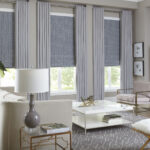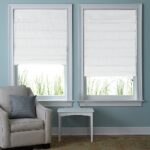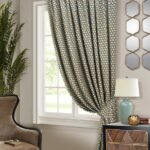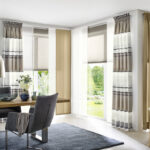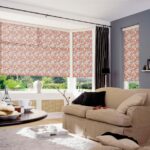Rules for decorating windows with curtains
The curtains and tulle for the room, according to the rules, are matched to the finished design of the room, so as not to contradict it, but to decorate it.
There are so many types of curtains and curtain installations that it is not easy to get lost in them, choosing the most suitable option.

Description and varieties of curtains for windows
Curtains and curtains for windows differ in style, fabric and materials, texture, style, purpose, size.
The worst solution would be to purchase curtains for the occasion, not combining them with the interior of the room. They can look faceless, boring, or alien to the overall style of the room.

In order to correctly order or buy curtains, it is necessary to distinguish between their types, characteristics and purpose.
Curtains and drapes
Not everyone knows the difference between curtains and curtains. Meanwhile, it is essential:
- Curtains are strips of lightweight fabric - voile, chiffon, or organza - that are hung along the sides of window openings. Most often, curtains are decorative.
- Curtains were originally curtains on doorways. Then curtains made of dense fabric that do not transmit light began to be called curtains. The curtains can also be sewn in two layers, which enhances the density and adds decorative effect in the combination of the "face" and the seamy side.
Both those and others can be complemented by other types of curtains, making up an integral composition.
With lambrequins
Curtains are often complemented with lambrequins, which are horizontal stripes of the same fabric that are placed on the windows at the top.
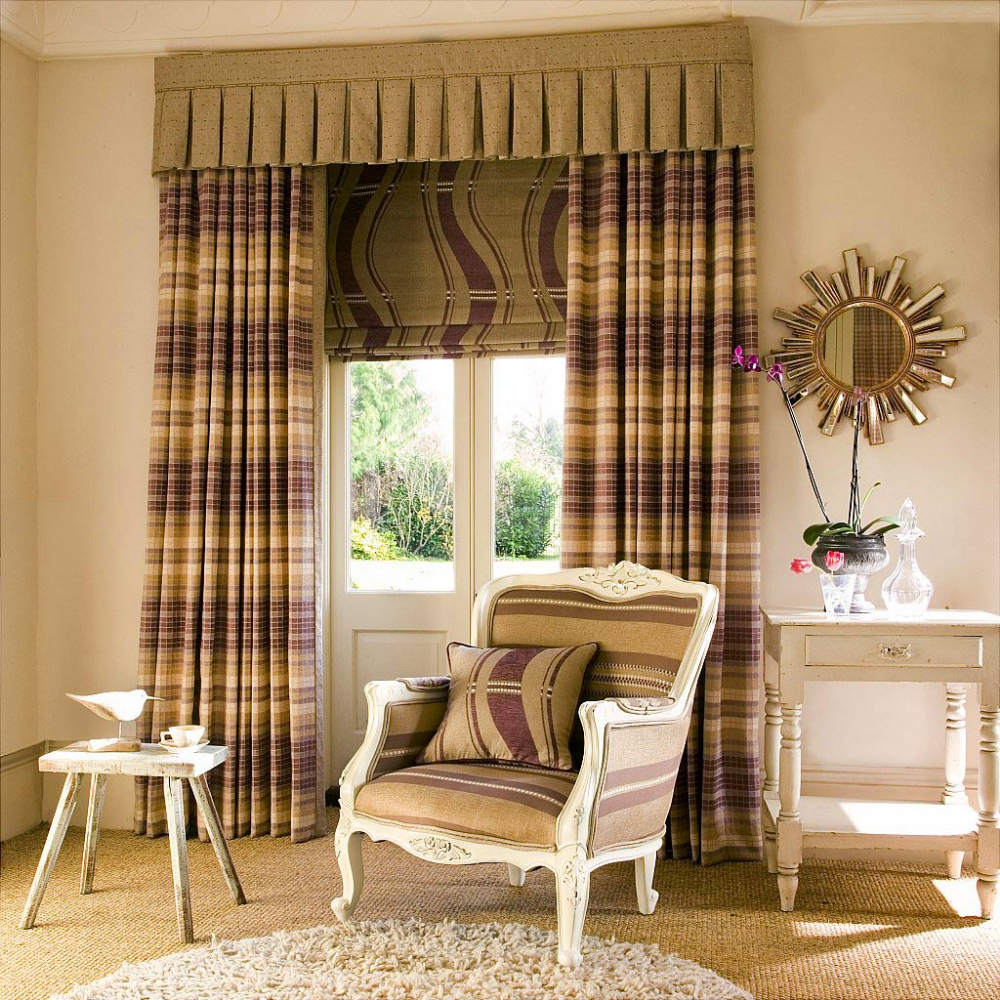
Lambrequins are typical for classic, empire, baroque styles, sometimes used in the corresponding design of country windows.
Lambrequins can be:
- Soft, in the form of frills.
- Rigid, which look like a box covered with the same fabric.
- Combined, complex shapes, combining a rigid frame and soft ruffles.

On grommets
The curtains on the eyelets are quite functional, they can be easily moved or spread out to the sides of the window, they form a beautiful accordion made of fabric. The disadvantage is that they need a round cornice, so they cannot be hidden in a stretch ceiling niche.

But the eyelets themselves serve as an excellent window decoration. Cornices can be placed above the window or under the ceiling.
Sliding
Sliding window curtains look stylish and beautiful, they can be complemented by other types.
Popular sliding curtains include:
Fabric roller blinds
They can be fixed on the wall or on each transom of the window separately - for example, on plastic windows. They perfectly shade the room and serve as protection from bright sunlight. They are made of dense natural fabrics - cotton and linen. Roller blinds are often made of rough burlap, which looks very stylish and unusual on any windows.

Japanese panels
The oriental look of curtains is loved all over the world for its conciseness and stylish look, as well as ease of use. They are suspended frames covered with light fabric, which can be easily moved apart and moved.
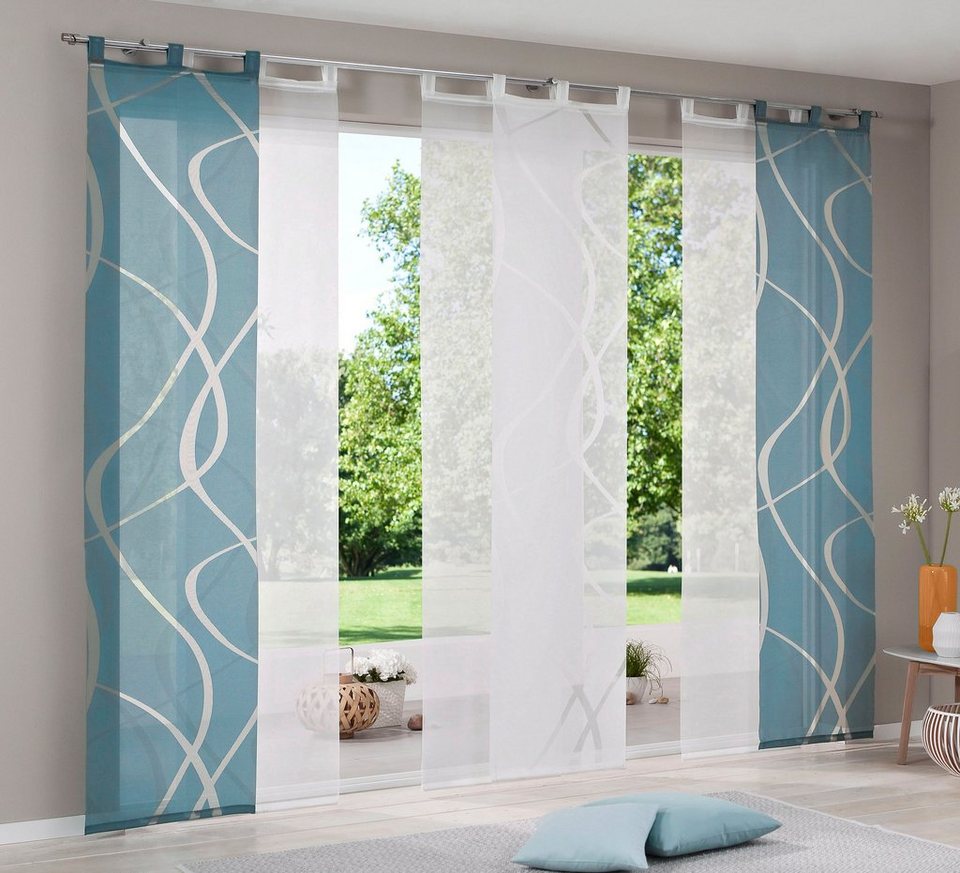
Australian
These are canvases of light fabric on the windows with rope stretches in height. With the help of these ropes, you can lower or raise curtains like blinds. Curtains of this type are widely used in baroque or empire interiors, but today they are non-extendable.

Blinds
They can be fabric, aluminum or plastic. The original options are made of straw, wood or bamboo.
Roman
A popular type of blinds. Their options can be seen in the photo of stylish modern interiors. They are canvases of dense (usually natural) fabric with crossbeams sewn at regular intervals, through the ends of which ropes are passed. Roman shades form beautiful large horizontal folds.

Sheer tulle
Tulle has long been an indispensable element in the design of window openings and is used in various interior styles, due to its variety of types and textures of fabric. Tulle is a light, airy fabric that allows you to close the window, but does not impede the passage of sunlight into the room. Most often, tulle is white, but there are also colored options.
The most popular tulles used in modern interiors:
- Organza. Creates airiness. Can be layered or very gathered. It transmits sunlight well, but prevents air ventilation due to its fine-mesh structure.
- Veil. Similar to organza in appearance, but silky and lighter.
- Kiseya. It looks like a veil with a mesh structure made of synthetic or linen threads.
- Net. A characteristic mesh structure with a large mesh of synthetic or natural threads. It can have a deliberately rough look like a fishing net, it is used more for decorating curtain installations.
- Muslin. Made from fine twisted threads. It is widely used in country, provence, empire designs. Indispensable in the kitchen.
- Classic tulle. Mesh material, on which, using a special weaving of threads or embroidery technology, patterns are applied in the same color. Sometimes there are also colored drawings on a single-color field, but less often.
Combined
The combination of different curtain options in one composition is popular and widespread. This applies to the classic interior, Baroque, Empire, Provence, Scandinavian style and others.

The correct combination of different types of curtains will not only decorate the window, but also make the entire interior of the room harmonious and stylish.
Keep in mind! Synthetic fabrics with plastic frames can become electrified; they need to be treated with special conditioners when washing.
How to choose
In the question of what curtains and curtains on the windows are for, functionality is important. Still, windows are a source of light, fresh air, view, and you need to curtain them so as not to lose their main purpose.
Before choosing, you need to decide on their design and combination, take into account the height of the ceilings and the size of the window, the type of cornice, the type of window frame.
How to properly decorate windows with curtains
Modern types of curtains for plastic or wooden windows allow everyone to create a unique composition that will decorate the room and be comfortable.
Big
Curtains for large panoramic windows are often chosen so that they look like one solid wall from ceiling to floor. For huge windows, there is no need for decorative blinds, and curtain fasteners, most often, are hidden in a stretch ceiling niche or under a ceiling molding.

For panoramic windows, thick curtains are needed when the windows need to be closed from prying eyes or bright sunlight. But designers recommend not to place curtain canvases in the center, this will break the harmony and make the room visually smaller and darker.
Keep in mind! For wide, full-wall windows, you can purchase a cornice with an electric drive that closes and opens the window, controlled by a remote control or a hidden switch on the wall.
Small
Small windows can be highlighted with airy curtains made of voile or organza, which add volume and transmit color well.
On small frames, asymmetrical versions of curtains and multi-layer curtains, collected by hooks or on curtain hooks on one side, look good. At the same time, it is worth abandoning lambrequins and swags.

If the window is unusually small in height, you should not choose long options - short curtains with hooks on the sides of the window or on the eyelets will look harmonious. It is better to place the cornice above the window.
Narrow
Narrow windows can be visually made wider if the cornices are placed under the ceiling. In this case, curtains can be a combination of a light spot in the center and darker ones on the sides of the window.

Keep in mind! Narrow windows can be visually enlarged if the curtains are made much larger than the window opening (50 cm from the sides).
Low
For low-lying window openings, choose a cornice for the ceiling. If the partition above the window is too noticeable, and transparent veils will give it out, then you should combine them with sliding options for curtains - Roman or Australian curtains, fabric roller blinds, as well as blinds of a suitable type. Sliding curtains should be raised to the upper level of the window glass, then the effect of a slightly covered, but full-size window will be created.

Window decoration
To decorate windows, various types of curtain draperies with scallops, lambrequins and swag, curly hooks and curtain hooks are widely used today.

Window decorations also include cornices - both original versions above windows and invisible ones, allowing the curtains to "float" in the air.
Keep in mind! When decorating openings and curtains, it is important not to overload the installation with an abundance of details, because minimalism in window decoration is in fashion today, and curtains should be functional.

The curtains, matched to the tone of the decor and the walls of the room, are suitable for small rooms that should not be crossed out with color spots, visually reducing them further. But, in any case, you can combine shades in such a way that the window also becomes a decoration. Stand-out curtains are suitable for spacious rooms, but there is one important rule in choosing the color of the curtains: either the window should become the main color spot in a monochrome interior, or you should choose more muted tones and combine with the overall tone of the room.
Video: varieties of curtains for windows














